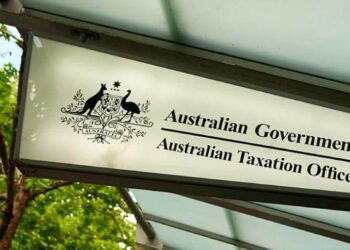William Fettes, senior associate at DBA Lawyers, said many trustees and advisers assume that having splitting orders in place will finalise a split from a legal and tax perspective.
“However, this is not the case,” he said.
“Additional steps are required to comply with the superannuation legislation and regulations and to ensure any applicable CGT roll-over relief applies as intended.”
Mr Fettes explained that when a relationship breaks down, the superannuation entitlements of each party may be subject to a family law property settlement.
Splitting orders determine how superannuation will be divided under court orders/minutes of consent, or a superannuation agreement as part of a binding financial agreement.
The relevant parties in superannuation splitting laws are referred to as the member spouse (MS) and non-member spouse (NMS).
Mr Fettes said the MS is the party whose superannuation interest is subject to a split.
“They are the party giving up their super in relation to a particular split. The member who is the beneficiary of the split is referred to as the NMS,” he explained.
The terms are not based on membership status in the SMSF and an MS can depart the fund while the NMS remains, he added.
Mr Fettes said splitting orders must follow the required steps under the Superannuation Industry (Supervision) Act 1993 (Cth) (SISA) and the Superannuation Industry (Supervision) Regulations 1994 (Cth) (SISR).
There are four steps required for an SMSF in which a split is implemented under div 7A.2 of the SISR initiated by the NMS.
Step one of the process requires the NMS to provide the SMSF trustee with a copy of the splitting orders together with a notice under the Family Law (Superannuation) Regulations 2001 (Cth) regarding the split.
Secondly, the SMSF trustee must give each party a “payment split notice” to formally notify the parties that the interest of the MS is subject to a split under the terms of the splitting order.
The third step has three options and is subject to the governing rules of the fund.
Mr Fettes said in this step the NMS must make a choice regarding how the split amount is to be treated and notify the SMSF trustee of that choice.
“There are three options available to the NMS,” he said.
“Option one is the creation of a new interest in the name of the NMS. Option two is to transfer or roll over the amount to the NMS’s nominated superannuation fund.
“The final option is for the payment to be made as a lump sum.”
He continued that sharing an SMSF after a relationship breakdown is not advisable and option one is generally only implemented as part of preparatory work for one of the members to exit the SMSF.
“Where a condition of release has not been satisfied, option two is the more common option,” he said.
“This is where the split amount known as transferable benefits is rolled over to another fund, such as a new SMSF or a large public offer superannuation fund.”
The final step in the process is carried out once the other three steps have been completed and the trustee has approved the choice of NMS.
“The trustee must then calculate the amount to be transferred, determine the tax components and the preservation components and notify each of the parties regarding the split being implemented,” Mr Fettes said.
“A rollover of any remaining member benefits would typically occur in conjunction with the transfer of the split amount using the prescribed ATO forms.”
The fund must also update all records and prepare relevant trustee resolutions.
Mr Fettes warned that splitting orders are not self-executing and do not cover the additional obligations that apply to a super split under the SISA and SISR.
Regulated super funds operate under regulation 7A.02 of the SISR and failure to give notice of splitting orders can result in one or more contraventions of s 34(1) of the SISA.
Mr Fettes added failing to lodge appropriate splitting implementation documents under the SISR may also result in claims being brought against advisers who were involved in the process.
“Unfortunately, many advisers, including experienced family law practitioners, are not fully aware of the SISR criteria and they may not point out these aspects to their clients,” he said.
“The client’s other advisers such as accountants and financial planners could also face consequences.”
Mr Fettes added that splitting documents is also important in the context of the family law CGT roll-over relief provisions in the Income Tax Assessment Act 1997 (Cth) (ITAA 1997).
“For instance, under s 126‑140(2), CGT roll-over relief can apply where an SMSF or other small fund transfers a CGT asset to another complying superannuation fund pursuant to a payment split for the benefit of a NMS,” he said.
“Under s 126‑140(2)(c) it is required that properly drafted splitting documents are in place or it could jeopardise intended CGT roll-over relief,” he said.
“The remaining member in the SMSF could be faced with a tax bill and possible penalties in connection with the relevant capital gain not being disregard as intended.”


